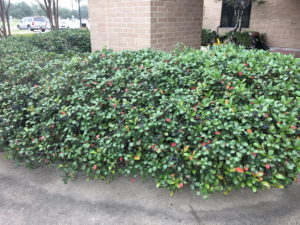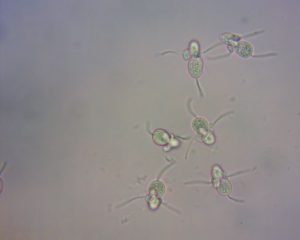Written by Kendall Grier – TPDDL Student Worker;
Edited by Hannah Ayala – Extension Assistant
Disease is everywhere! As plant diagnosticians, we are constantly reminded of this everywhere we go. One of these reminders is daily as we walk into the lab for work. When you walk into the Centeq building (the building where the Texas Plant Disease Diagnostic Lab is located) you are greeted by some spotted Indian Hawthorns. At first glance they look very pretty, almost as if the color change is caused by the changing season. However, after a closer look we can find that the Indian Hawthorns look red for a much more sinister reason. They have a disease called Entomosporium. Entomosporium is a disease of woody ornamentals in the rose family (Rosaceae).
Symptoms of Entomosporium include a bright red leaf spot, almost like Rudolph’s nose, with a center that is typically brown to maroon in color. But unlike the cheer associated with Rudolph’s nose this red spot is more like a warning of worst things to come. Light infections by Entomosporium can cause minor cosmetic damage, but more major infections of Entomosporium can cause premature leaf drop.
Entomosporium can be spread through the splashing of water. This can be prevented by mulching the base of the tree and removing infected leaves from the base of the tree to reduce overall inoculum levels. The conidia of Entomosporium almost look like little mice to me and are very fun to find under the microscope! However, Entomosporium actually got its name because someone else thought its conidia looked like insects. Hence the ENTOmosporium.
Want to learn more?
WHAT Wednesday Entomosporium Video
Entomosporium Leafspot of Photinia and Indian Hawthorn Factsheet





